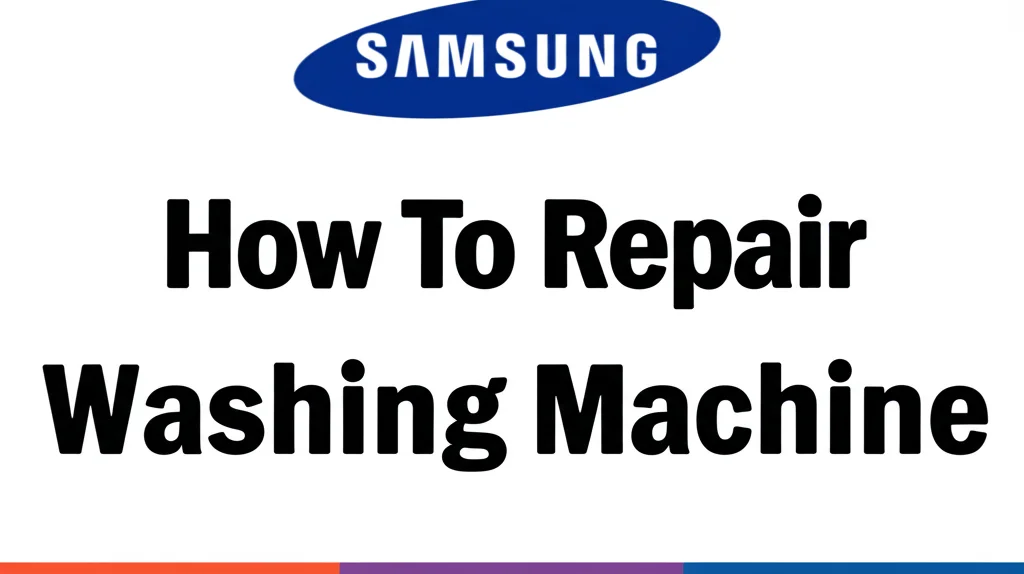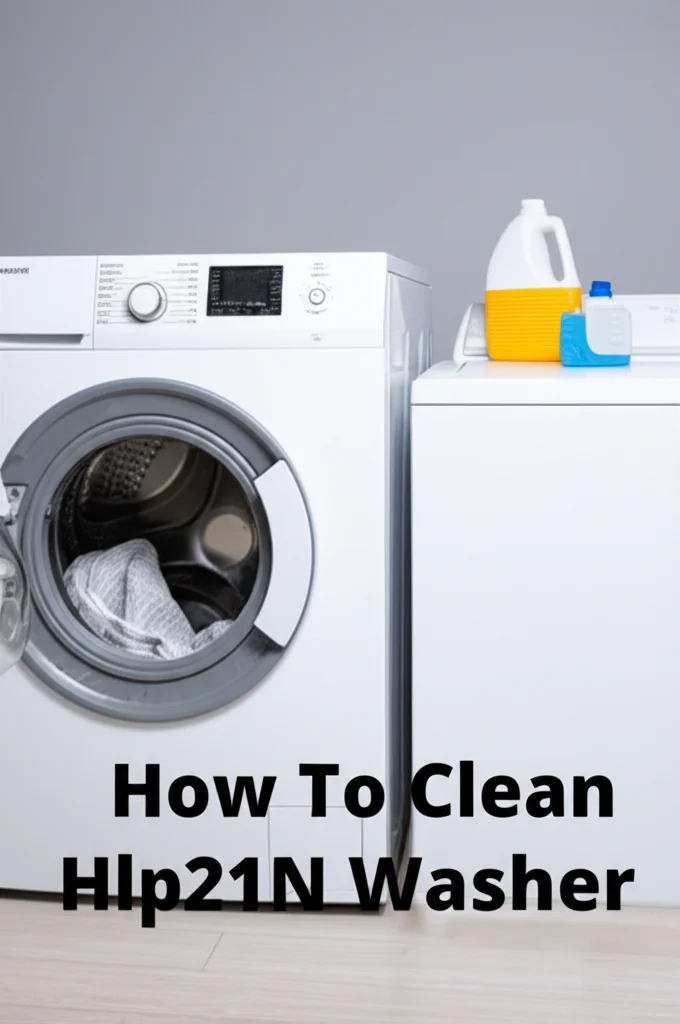· Home Appliances · 8 min read
How To Repair Samsung Washing Machine

Is Your Samsung Washer Giving You Trouble? A Repair Guide
Is your Samsung washing machine refusing to spin, leaking water, or making strange noises? Don’t immediately assume you need to call a professional or buy a new machine. Many common Samsung washing machine problems are surprisingly easy to diagnose and fix yourself. This guide will walk you through troubleshooting and repairing your Samsung washer, saving you money and the hassle of a service call. We’ll cover everything from simple fixes to more involved repairs, helping you get your laundry routine back on track. Let’s dive in and get your Samsung washing machine working like new!
Takeaway:
- Identify the problem: Understand the symptoms your washer is exhibiting.
- Safety first: Always disconnect power before attempting any repairs.
- Simple fixes: Check hoses, drain pump filters, and door locks.
- Component replacement: Learn how to replace common parts like belts and pumps.
Quick Answer:
Repairing a Samsung washing machine often involves checking simple components like the drain pump filter, hoses, and door lock. More complex issues may require replacing parts like the water inlet valve, drain pump, or drive belt. Always disconnect the power before starting any repair.
1. Diagnosing the Problem with Your Samsung Washer
Before you start taking things apart, it’s crucial to accurately diagnose the issue. A clear understanding of the problem will save you time and prevent unnecessary repairs. Start by observing the symptoms carefully. Is the washer not starting at all? Is it filling with water but not agitating? Or perhaps it’s draining improperly?
Here’s a breakdown of common problems and their potential causes:
- Washer won’t start: Could be a power issue, a faulty door lock switch, or a problem with the control board.
- Washer won’t fill: Check the water supply hoses, the water inlet valve, and the water pressure.
- Washer won’t drain: A clogged drain pump filter is the most common culprit, but a faulty drain pump could also be the issue.
- Washer won’t spin: A worn drive belt, a faulty motor, or an overloaded drum can prevent spinning.
- Washer is leaking: Inspect the hoses, the door boot, and the drain pump for leaks.
- Washer is making loud noises: Foreign objects in the drum, worn bearings, or a failing motor can cause noise.
2. Safety First: Disconnecting Power and Water
Before you even think about touching any internal components, safety is paramount. Always disconnect the power supply to your washing machine. Locate the circuit breaker that controls the washer and switch it off. Then, unplug the washer from the electrical outlet. This prevents the risk of electric shock.
Next, turn off the water supply to the washer. There are usually two shut-off valves behind the machine – one for hot water and one for cold water. Turn both valves clockwise to close them. This prevents water from flooding your laundry room while you’re working. Remember, water and electricity don’t mix! If you’re unsure about any step, it’s always best to consult a qualified technician. You can also find helpful resources on appliance safety at https://www.beacleaner.com/how-to-clean-washing-machine-pipes/.
3. Simple Fixes: Checking Hoses, Filters, and the Door Lock
Many Samsung washing machine problems have surprisingly simple solutions. Start with the easy checks before moving on to more complex repairs. First, inspect the water supply hoses for kinks or blockages. Make sure they are securely connected to both the washer and the water supply valves.
Next, check the drain hose. Ensure it’s not kinked, clogged, or improperly positioned. The drain hose should be elevated to prevent siphoning. A common issue is a clogged drain pump filter. This filter catches lint, coins, and other debris. Locate the filter (usually behind a small access panel at the bottom front of the washer), remove it, and clean it thoroughly.
Finally, check the door lock. Samsung washers won’t start if the door isn’t securely locked. Inspect the door lock mechanism for damage or obstructions. If the lock seems faulty, it may need to be replaced. Keeping your washing machine clean can also prevent some of these issues; consider learning https://www.beacleaner.com/how-to-clean-mould-from-washing-machine-drawer/ to maintain a healthy appliance.
4. Replacing the Drain Pump: A Common Repair
If your Samsung washer isn’t draining properly after cleaning the filter, the drain pump itself may be faulty. Replacing the drain pump is a relatively straightforward repair. First, disconnect the power and water supply (as described in Section 2). Then, access the drain pump. This usually involves removing the front or back panel of the washer.
Disconnect the hoses connected to the drain pump. There will be an inlet hose and an outlet hose. Then, disconnect the electrical connector to the pump. Remove the old pump and install the new one, connecting the hoses and electrical connector in the reverse order. Make sure the pump is securely mounted. Finally, restore power and water and test the washer. A faulty drain pump is a common issue, and replacing it can often restore your washer to full functionality.
5. Addressing Spin Cycle Problems: The Drive Belt
If your Samsung washing machine is filling and washing clothes but not spinning, a worn or broken drive belt is a likely culprit. The drive belt connects the motor to the drum, allowing it to spin. To replace the drive belt, you’ll need to access the motor and drum. This usually involves removing the back panel of the washer.
Once you have access to the motor and drum, locate the drive belt. Inspect it for wear and tear. If it’s cracked, frayed, or broken, it needs to be replaced. Remove the old belt and install the new one, ensuring it’s properly seated on the motor pulley and the drum pulley. Reassemble the washer and test the spin cycle. A new drive belt can often resolve spin cycle issues and get your washer back to working order. Sometimes, a simple cleaning can prevent future issues; you might find https://www.beacleaner.com/how-to-clean-discolored-vinyl-flooring/ helpful for maintaining a clean laundry space.
6. Dealing with Leaks: Inspecting Hoses and the Door Boot
Leaks can cause water damage and potentially lead to electrical hazards. If you notice water leaking from your Samsung washing machine, the first step is to identify the source of the leak. Inspect the water supply hoses for cracks or loose connections. Tighten any loose connections and replace any damaged hoses.
Next, check the drain hose for leaks. Ensure it’s securely connected to the drain pipe and that there are no cracks or holes. The door boot (the rubber seal around the door) is another common source of leaks. Inspect the door boot for tears or damage. If it’s damaged, it needs to be replaced. Leaks can also occur around the pump or other internal components. Carefully inspect these areas for signs of water. Addressing leaks promptly can prevent further damage and ensure the safe operation of your washer.
7. When to Call a Professional
While many Samsung washing machine repairs can be done DIY, some problems are best left to the professionals. If you’re uncomfortable working with electrical components, or if you’re dealing with a complex issue like a faulty control board or a malfunctioning motor, it’s best to call a qualified appliance repair technician. Attempting to repair these components yourself could be dangerous and could potentially void your warranty.
Also, if you’ve tried the troubleshooting steps outlined in this guide and your washer still isn’t working, it’s time to call in the experts. A professional technician has the knowledge, tools, and experience to diagnose and repair even the most challenging washing machine problems. Remember, safety should always be your top priority. You can also find helpful cleaning tips for your home at https://www.beacleaner.com/how-to-clean-kitchen-floor-without-mop/.
FAQ: Common Samsung Washer Repair Questions
Q: My Samsung washer smells bad. What can I do?
A: A foul odor often indicates mold or mildew growth. Run an empty hot water cycle with a cup of bleach or washing machine cleaner. Regularly clean the detergent dispenser and door boot to prevent buildup.
Q: Why is my Samsung washer vibrating excessively?
A: Excessive vibration can be caused by an unbalanced load, an uneven floor, or worn shock absorbers. Ensure the load is balanced, the washer is level, and the shock absorbers are in good condition.
Q: My Samsung washer is displaying an error code. What does it mean?
A: Error codes indicate specific problems. Consult your Samsung washer’s user manual to decipher the code and find troubleshooting steps.
Q: How often should I clean the drain pump filter?
A: It’s recommended to clean the drain pump filter every 3-6 months, or more frequently if you notice slow draining.
Q: Can I use vinegar to clean my Samsung washing machine?
A: Yes, vinegar can be used as a natural cleaning agent. Add two cups of white vinegar to the detergent dispenser and run an empty hot water cycle.
Conclusion: Keeping Your Samsung Washer Running Smoothly
Repairing your Samsung washing machine doesn’t have to be daunting. By following the steps outlined in this guide, you can diagnose and fix many common problems yourself, saving you money and time. Remember to always prioritize safety by disconnecting power and water before starting any repairs. Regular maintenance, such as cleaning the drain pump filter and inspecting hoses, can help prevent future issues. If you encounter a complex problem or are uncomfortable performing a repair yourself, don’t hesitate to call a qualified appliance repair technician. With a little knowledge and effort, you can keep your Samsung washing machine running smoothly for years to come. Don’t forget to explore other helpful cleaning and maintenance tips on our site, like https://www.beacleaner.com/how-to-clean-outside-windows-upstairs/ for a sparkling clean home!




